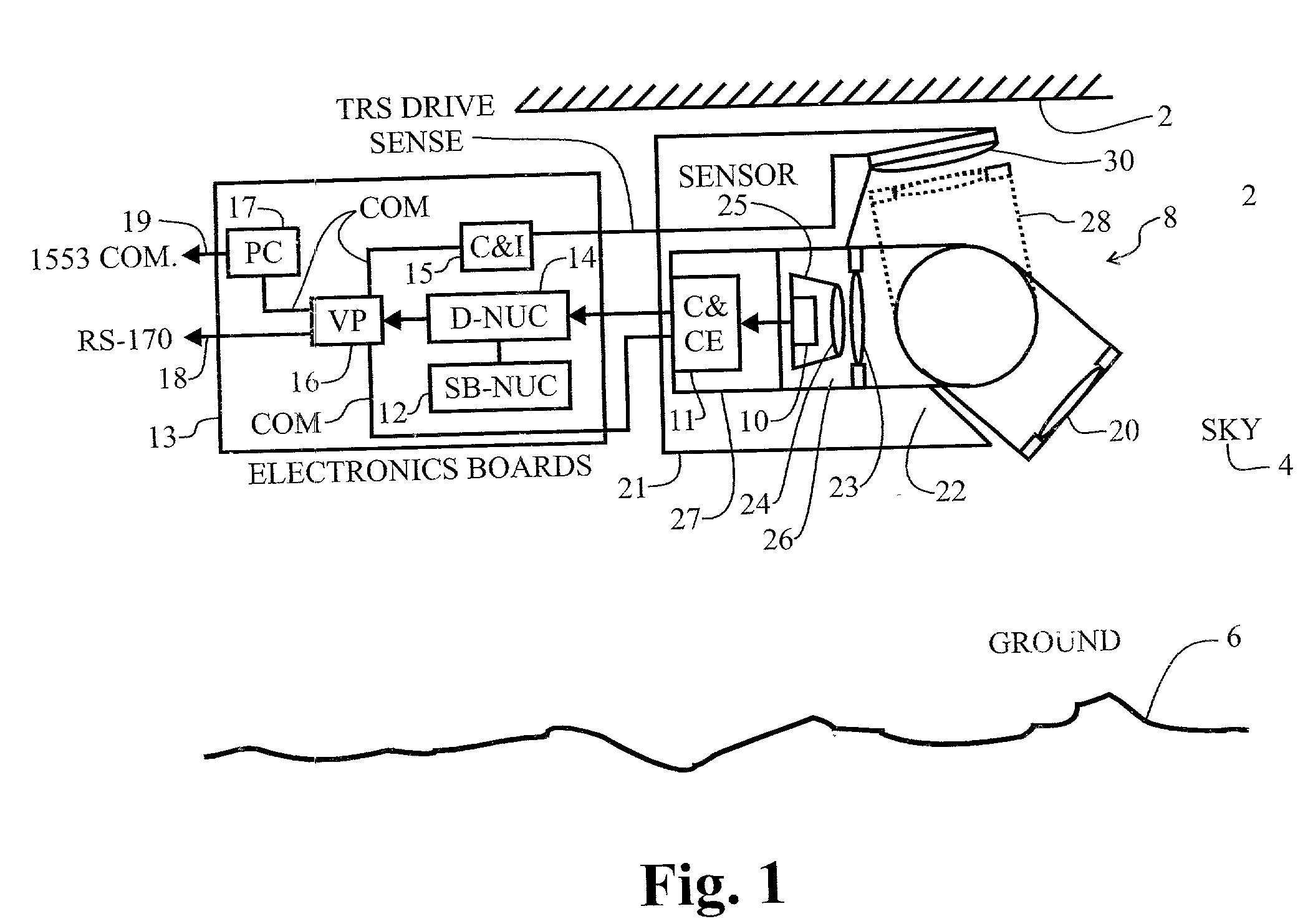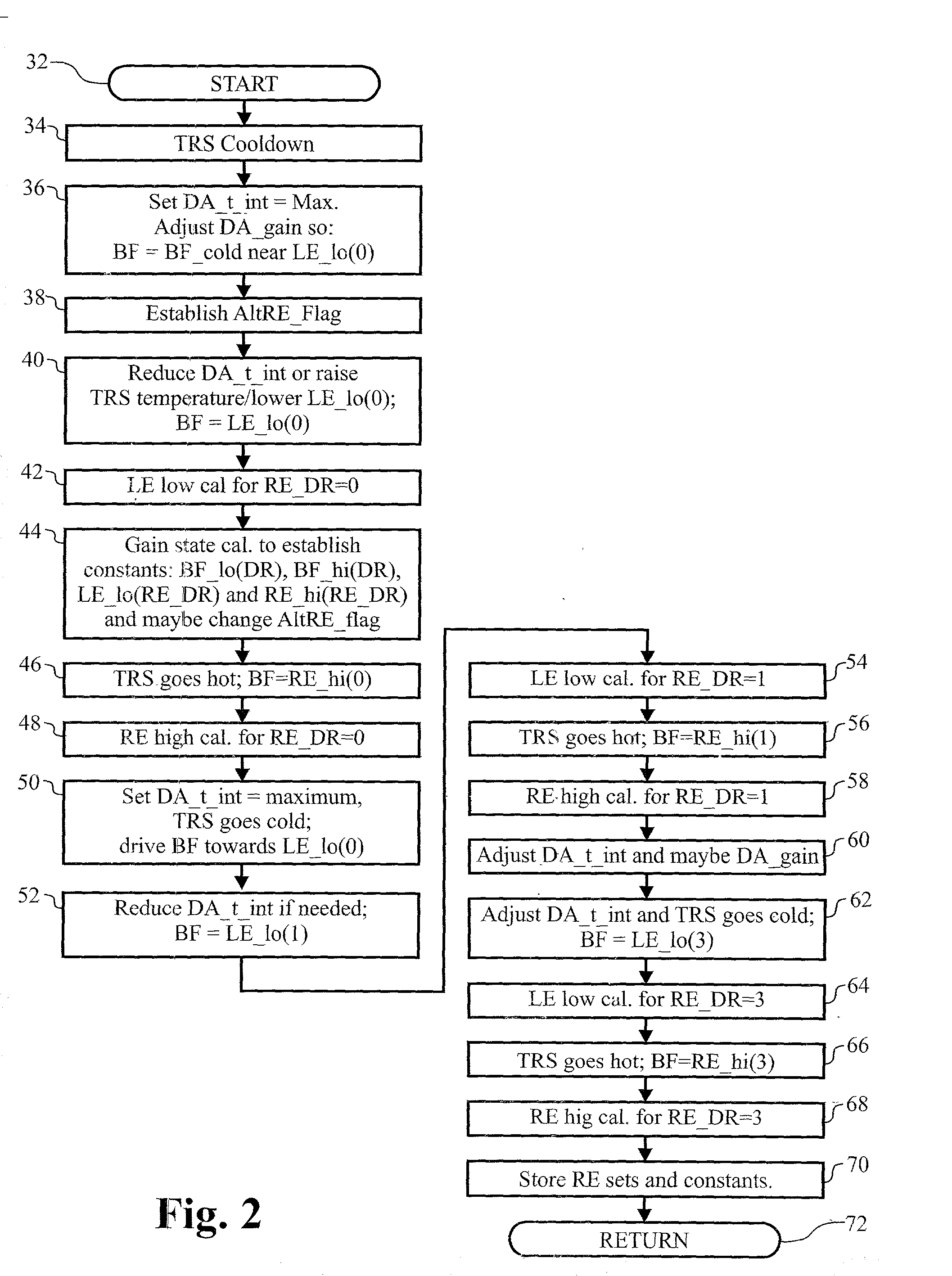Display uniformity calibration system and method for a staring forward looking infrared sensor
a technology of infrared sensor and uniform calibration system, which is applied in the field of infrared detection systems, can solve the problems of adjusting the sensor dynamic range, the optical performance of a typical flir system, and the optical component itself being a source of nois
- Summary
- Abstract
- Description
- Claims
- Application Information
AI Technical Summary
Benefits of technology
Problems solved by technology
Method used
Image
Examples
Embodiment Construction
[0031] Illustrative embodiments and exemplary applications will now be described with reference to the accompanying drawings to disclose the advantageous teachings of the present invention.
[0032] While the present invention is described herein with reference to illustrative embodiments for particular applications, it should be understood that the invention is not limited thereto. Those having ordinary skill in the art and access to the teachings provided herein will recognize additional modifications, applications, and embodiments within the scope thereof and additional fields in which the present invention would be of significant utility.
[0033] FIG. 1 is a functional block diagram of an illustrative embodiment FLIR system as it might be deployed on an aircraft. The present invention utilizes an algorithm that is employed in the initialization procedures of forward-looking infrared ("FLIR"). The aircraft 2 operates in the sky 4 above the ground 6. A FLIR pod 8 is mounted to the airc...
PUM
 Login to View More
Login to View More Abstract
Description
Claims
Application Information
 Login to View More
Login to View More - R&D
- Intellectual Property
- Life Sciences
- Materials
- Tech Scout
- Unparalleled Data Quality
- Higher Quality Content
- 60% Fewer Hallucinations
Browse by: Latest US Patents, China's latest patents, Technical Efficacy Thesaurus, Application Domain, Technology Topic, Popular Technical Reports.
© 2025 PatSnap. All rights reserved.Legal|Privacy policy|Modern Slavery Act Transparency Statement|Sitemap|About US| Contact US: help@patsnap.com



